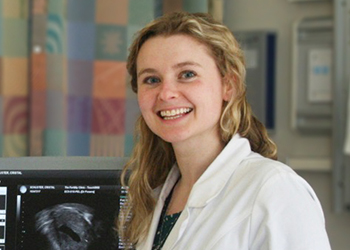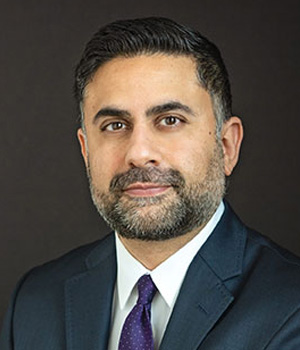Research News: New study explores resident perspectives on the pandemic
By Crystal Mackay, MA’05
Resident physicians are in the unique position of simultaneously being learners and health care providers on the front-lines, a position that provided a unique lens on the pandemic.
New research from Schulich Medicine & Dentistry’s Centre for Education Research & Innovation (CERI), demonstrated that for resident physicians witnessing the ways in which COVID-19 health care policy negatively influenced already stigmatized and vulnerable populations, created feelings of powerlessness and moral distress.
 “Residents are so unique because they are in a space where they are learning, they are also teachers who are supporting more junior colleagues and are also providing patient care,” said Dr. Taryn Taylor, Assistant Professor in the Department of Obstetrics and Gynaecology and Scientist at CERI. “With all of these lenses they are able to see the structural stigma playing out, but also experience this moral distress because they don’t have the roles and responsibilities to be able to effect change that may need to happen.”
“Residents are so unique because they are in a space where they are learning, they are also teachers who are supporting more junior colleagues and are also providing patient care,” said Dr. Taryn Taylor, Assistant Professor in the Department of Obstetrics and Gynaecology and Scientist at CERI. “With all of these lenses they are able to see the structural stigma playing out, but also experience this moral distress because they don’t have the roles and responsibilities to be able to effect change that may need to happen.”
The researchers interviewed 22 participants from across Canada, including 17 residents, during the first wave of the COVID-19 pandemic. The team specifically spoke to residents from outside of London and Schulich Medicine in order to ensure the residents felt comfortable speaking candidly.
The aim was to explore how residents perceive moral distress as it relates to the care of structurally stigmatized patients during the pandemic. Moral distress is a concept that describes a person’s reaction when they feel they know the right thing to do but are unable to do it because of personal constraints or external barriers.
 “We already know about moral distress from the literature, but what was unique about this group was that powerlessness was really at the core of their experiences,” said Dr. Javeed Sukhera, Associate Professor of Psychiatry and Paediatrics and Scientist at CERI. “This finding really helps to provide more information on how we can better support residents.”
“We already know about moral distress from the literature, but what was unique about this group was that powerlessness was really at the core of their experiences,” said Dr. Javeed Sukhera, Associate Professor of Psychiatry and Paediatrics and Scientist at CERI. “This finding really helps to provide more information on how we can better support residents.”
One example of structural stigma identified in the study was a lack of access to interpreters and support people for non-English-speaking patients during the first wave of the COVID-19 pandemic. Residents reported witnessing how this policy, while important for infection control, negatively impacted their patients and in some cases prevented them from receiving the best care.
Through their research, the team noted that residents felt faculty members who supported them and empowered them to be part of the change were beneficial in alleviating some of their moral distress.
“This isn’t necessarily unique to COVID,” said Taylor. “COVID just amplified this structural stigma and it highlights the importance of having more conversations with trainees to acknowledge structural stigma as a legitimate thing that is happening, and naming it for what it is, and then all moving toward change together.”








